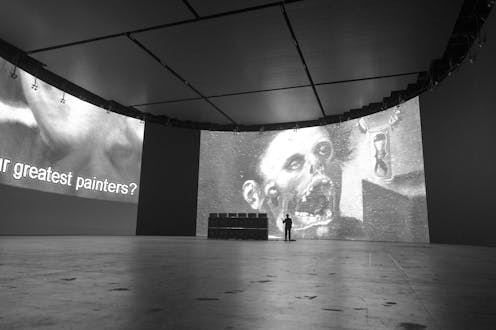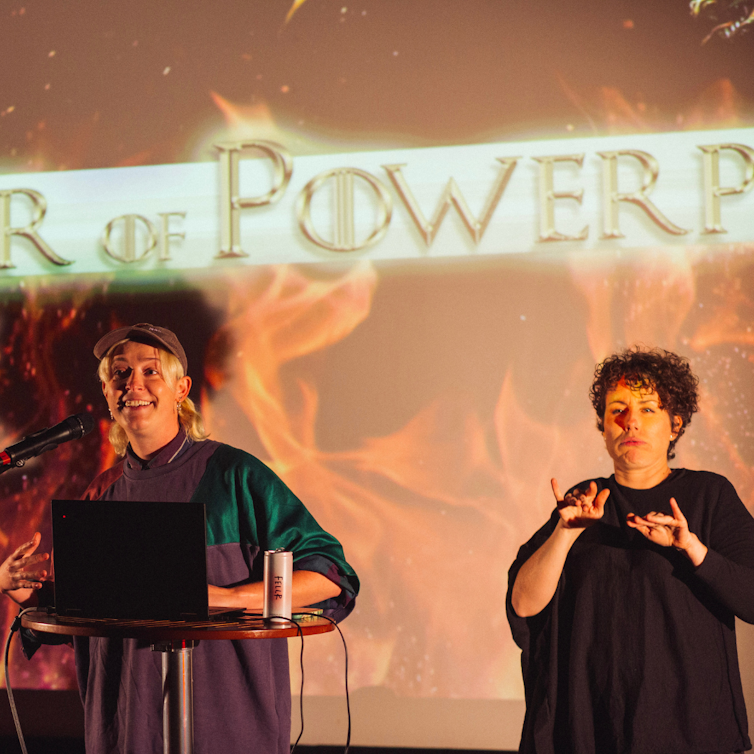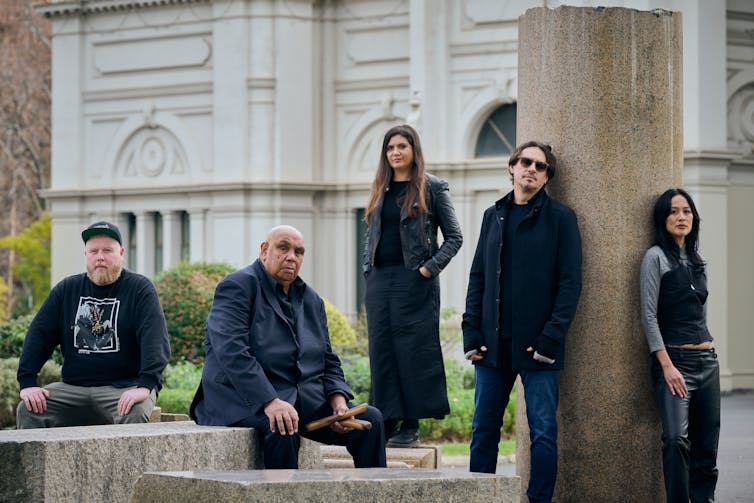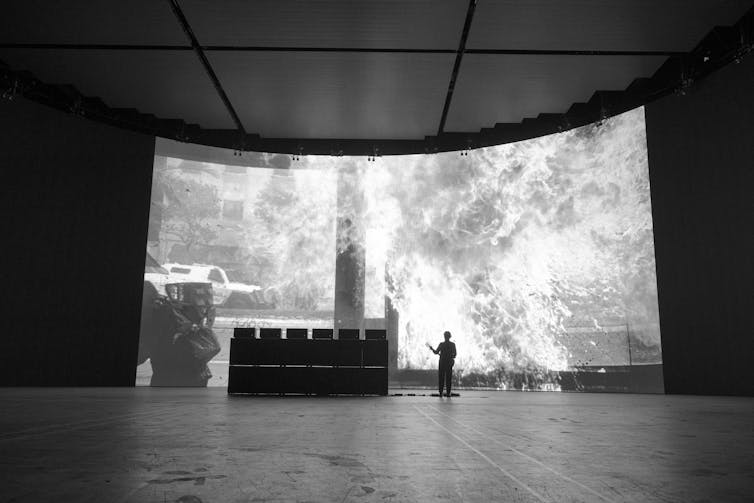
The City of Melbourne’s Now Or Never Festival has just finished its second year, packing an exciting and experimental ten-day punch with a focus on art, ideas, sound and technology.
The inaugural 2023 festival featured an eclectic and innovative program of works and included my personal favourite event, the divine Kali Malone on the grand organ at Melbourne Town Hall.
This year I attended three of the festival’s events, each one compelling and unique in its own way.
The artistry of PowerPoint
Federation Square’s Edge theatre was filled with joyful energy on Thursday night as six presenters took their turn onstage for Queer PowerPoint, in front of a large and very appreciative crowd.
The conceit of this delightfully comic and engaging show is simple: each presenter is given ten minutes to unpack a question, challenge a notion or share a particular fascination using that ubiquitous tool of 1980s corporate-speak: Microsoft PowerPoint.
Programmed and facilitated by artist/performers Harriet Gilles and Xanthe Dobbie, Queer PowerPoint has serious street cred as a cult hit which also featured at the Sydney Biennial. It’s a unique concept that repurposes the straitlaced domain of public speaking into a powerful way to share stories by and for diverse communities.

From impassioned diatribes about pigeons as underappreciated but toxically polyamorous partners, to hilarious and rapid-fire conspiratorial treatises that compare Ellen DeGeneres to Joan of Arc, Queer PowerPoint is smart, raucous and hugely inventive. Who knew the exploding text transitions embedded in this dowdy graphic interface could be so profoundly and creatively employed?
The show elevates PowerPoint to artistic heights, as spoken word intersects with gifs, images, diagrams, graphs, animations and text in a stupidly funny and extremely satisfying riot of information.
Soulful musicality in a sublime collaboration
On Friday, at the Capitol Theatre, I stared up at the beautifully tessellated ceiling designed by Walter Burley Griffin. The musicians began with a full, rich and resonant overture, before Uncle Kutcha Edwards entered with clapsticks.
This event, Wuigada – Gagada (To Sing – Loud), features First Nations songman and legend Kutcha Edwards, a Mutti Mutti, Yorta Yorta and Nari Nari man. The event is a testament to the Australian Art Orchestra’s rich legacy of creative alliances across cultures in its 30-year history.

Grounded in the orchestra’s trademark sonic experimentation, the collaboration is a moving and personal celebration of Uncle Kutcha’s soulful musicality.
The songs shift from big-band fat grooves, through to intense, reverberating jazz, and to delicate sonic moments supported by Ryan Williams’ spacious, breathy contrabass recorder and backing vocalist Hailey Cramer. But it’s Uncle Kutcha’s rich voice, compelling presence and potent vulnerability that make this performance so moving.
Perched on a stool, hands occasionally fluttering, eyes sometimes closed, he is a music master of the highest order. At the conclusion of the concert he stands and exhorts the audience in language – then sings the musicians off the stage.
His encore number, a quietly devastating reminder of the deep sadness still present in and through the Stolen Generations, crystallises into a gentler moment of feeling that demonstrates the lingering impact of past acts and the transformative power of music.
Visceral immersive and intense
In cacophonous contrast to Uncle Kutcha’s show is Desastres, Marco Fusinato’s solo performance held in the cavernous Studio 1 at Docklands.
As I enter the space, I’m met by an earthquake of power chords generated by a lone guitarist and his audio stacks silhouetted against three massive digital screens. Earplugs are provided but I remove them after a few minutes to really immerse myself – and my body – in the sound, which is visceral, vibrating up through my feet and chest.
Stark black and white images flash thick and fast across the screens, timed precisely to the sound, which pulses, shreds, slows and groans. The images – of skulls, leaves, ancient texts, ammunition, war zones, palimpsests of torn walls, and more – are too rapid and chaotic to retain in my conscious mind.
As Fusinato’s rhythmic and deafening pulses shift across the space, the wall of sound stutters to staccato. We experience a second or two of blissful silence before we are immersed in a sonic world of screeching bombs, single gunshots and blasts. It’s a shattering moment.
It is as intense as it sounds. Fusinato is a noise-musician, working with and from multiple sources. And despite the fractured onslaught of photos and flashes, there’s a coherence to the work: a careful and considered dramaturgy of light, dark, noise and image.

All three of the works I witnessed at Now or Never 2024 were captivating in different ways. Each one is also evidence of the thoughtful and provocative remit of the festival.
I leave feeling equal parts disrupted, enlivened and uplifted, pondering the imaginative ways in which the unfolding of language – spoken, visual, sonic, embodied – is made manifest through artistic practice.
If this success is anything to go by, Now Or Never could continue to be a compelling fixture in Melbourne’s festival calendar.
Kate Hunter does not work for, consult, own shares in or receive funding from any company or organisation that would benefit from this article, and has disclosed no relevant affiliations beyond their academic appointment.
This article was originally published on The Conversation. Read the original article.







